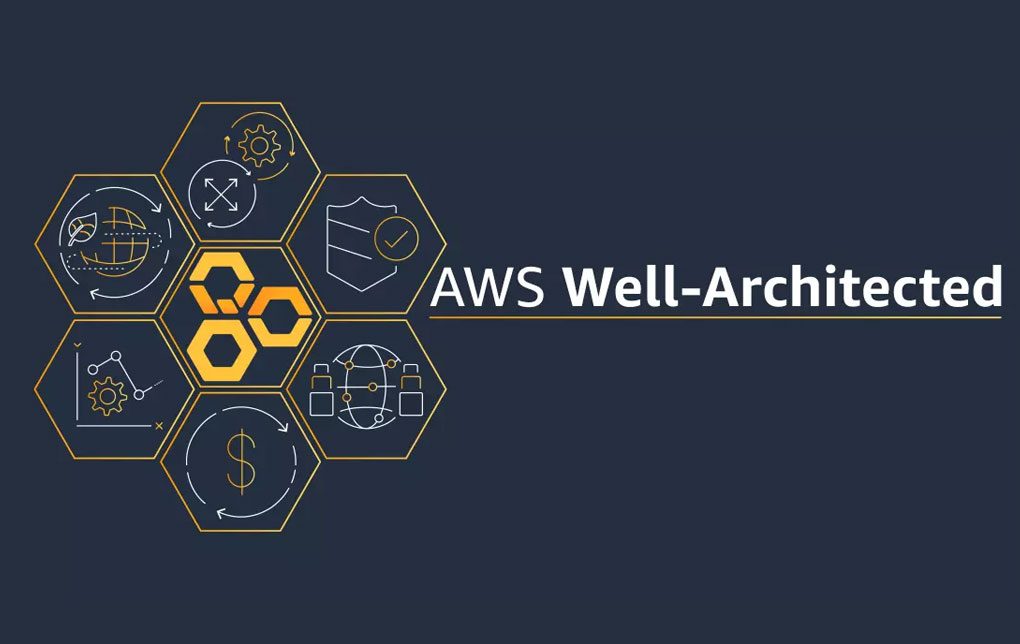AWS Well-Architected Framework: Evaluate & Optimize existing workloads
The AWS Well-Architected Framework is a set of best practices and guidelines to help you design and operate reliable, secure, efficient, and cost-effective systems in the cloud. By following this framework, you can build high-quality applications and workloads that make the most of AWS services. This blog will explore the core components of the AWS Well-Architected Framework and how you can use it to optimize your cloud architecture.
Kube8Cloud – AWS Well-Architected Framework
Kube8Cloud is one of the leading partners of AWS. Helping customers to optimize their existing AWS investments in Cloud. Kube8Cloud offers tool based Well Architected Framework. This will help in saving the Assessment time by 40% compared to other partners in the market.
Pillars of the AWS Well-Architected Framework
The AWS Well-Architected Framework consists of five pillars:
1. Operational Excellence
2. Security
3. Reliability
4. Performance Efficiency
5. Cost Optimization
6. Sustainability
Each pillar focuses on specific areas that contribute to the overall health and performance of your systems. Together, they provide a comprehensive approach to cloud architecture, ensuring that your applications are robust, secure, and scalable.
Pillar 1: Operational Excellence
Operational excellence focuses on running and monitoring systems to deliver business value and continuously improve supporting processes and procedures.
Key Best Practices:
· Perform Operations as Code: Use code to automate operations such as deployments, monitoring, and incident response.
· Make Frequent, Small, Reversible Changes: Reduce the risk of change by deploying small, incremental updates.
· Refine Operations Procedures Frequently: Regularly review and improve your operational procedures.
· Anticipate Failure: Design systems with the expectation that failures will occur. Implement strategies for recovery and mitigation.
Pillar 2: Security
The security pillar focuses on protecting information, systems, and assets through risk assessments and mitigation strategies.
Key Best Practices:
· Implement Strong Identity and Access Management: Use AWS Identity and Access Management (IAM) to control access to resources.
· Enable Traceability: Monitor, log, and audit actions and changes to your environment in real-time.
· Apply Security at All Layers: Use a defense-in-depth approach with multiple security controls.
· Automate Security Best Practices: Use automated tools to enforce security policies and detect vulnerabilities.
Pillar 3: Reliability
Reliability ensures that your workload performs its intended function correctly and consistently, even when confronted with challenges.
Key Best Practices:
· Test Recovery Procedures: Regularly test your disaster recovery and backup plans.
· Automatically Recover from Failure: Implement automated recovery strategies to handle failures.
· Scale Horizontally to Increase Aggregate Availability: Use multiple smaller resources to increase availability and reduce the impact of failures.
· Stop Guessing Capacity: Use elastic resources that can automatically scale based on demand.
Pillar 4: Performance Efficiency
Performance efficiency involves using IT and computing resources efficiently to meet system requirements and to maintain that efficiency as demand changes and technologies evolve.
Key Best Practices:
· Democratize Advanced Technologies: Use managed services that allow you to leverage advanced technologies without needing deep expertise.
· Go Global in Minutes: Use AWS regions and Availability Zones to deploy globally.
· Use Serverless Architectures: Implement serverless components to improve scalability and reduce management overhead.
· Experiment More Often: Test new configurations and services to optimize performance.
Pillar 5: Cost Optimization
Cost optimization involves managing and reducing costs, while still achieving business outcomes and system requirements.
Key Best Practices:
· Adopt a Consumption Model: Pay only for the resources you consume, and leverage on-demand pricing.
· Measure Overall Efficiency: Use AWS Cost Explorer and other tools to monitor and analyze your spending.
· Stop Spending Money on Undifferentiated Heavy Lifting: Use managed services to reduce operational complexity and cost.
· Analyze and Attribute Expenditure: Implement cost allocation tags to track and manage costs across your organization.
Pillar 6: Sustainability
The sustainability pillar focuses on minimizing the environmental impacts of running cloud workloads while maximizing resource efficiency.
Key Best Practices:
· Adopt Sustainable Resource Management:
o Optimize resource usage to minimize waste and energy consumption.
· Assess and Reduce Environmental Impact:
o Conduct environmental impact assessments to understand the carbon footprint of your applications.
· Efficient Resource Utilization:
o Maximize resource utilization to minimize the number of servers and energy required to run workloads.
· Promote a Culture of Sustainability:
o Encourage practices that promote sustainability within your organization.
Using the AWS Well-Architected Tool
AWS provides the AWS Well-Architected Tool, a service that helps you review and improve your cloud architectures based on the Well-Architected Framework. It offers:
· Review Workloads: Evaluate your workloads against the best practices in the framework.
· Identify Risks: Identify potential risks in your architecture and get recommendations for improvement.
· Track Progress: Monitor your progress over time as you implement best practices and improvements.
Conclusion
The AWS Well-Architected Framework is a powerful tool for building high-quality, resilient, and efficient cloud applications. By adhering to the principles and best practices outlined in the five pillars, you can ensure that your workloads are optimized for performance, security, and cost-efficiency. Utilize the AWS Well-Architected Tool to continually assess and improve your architecture, ensuring that they align with your business goals and evolving needs.
Implementing these guidelines will help you leverage AWS services effectively, providing a solid foundation for your cloud infrastructure and ensuring long-term success.

